2025 MXA 85cc SHOOTOUT YAMAHA VS. HUSQVARNA VS. GASGAS VS. KAWASAKI VS. KTM
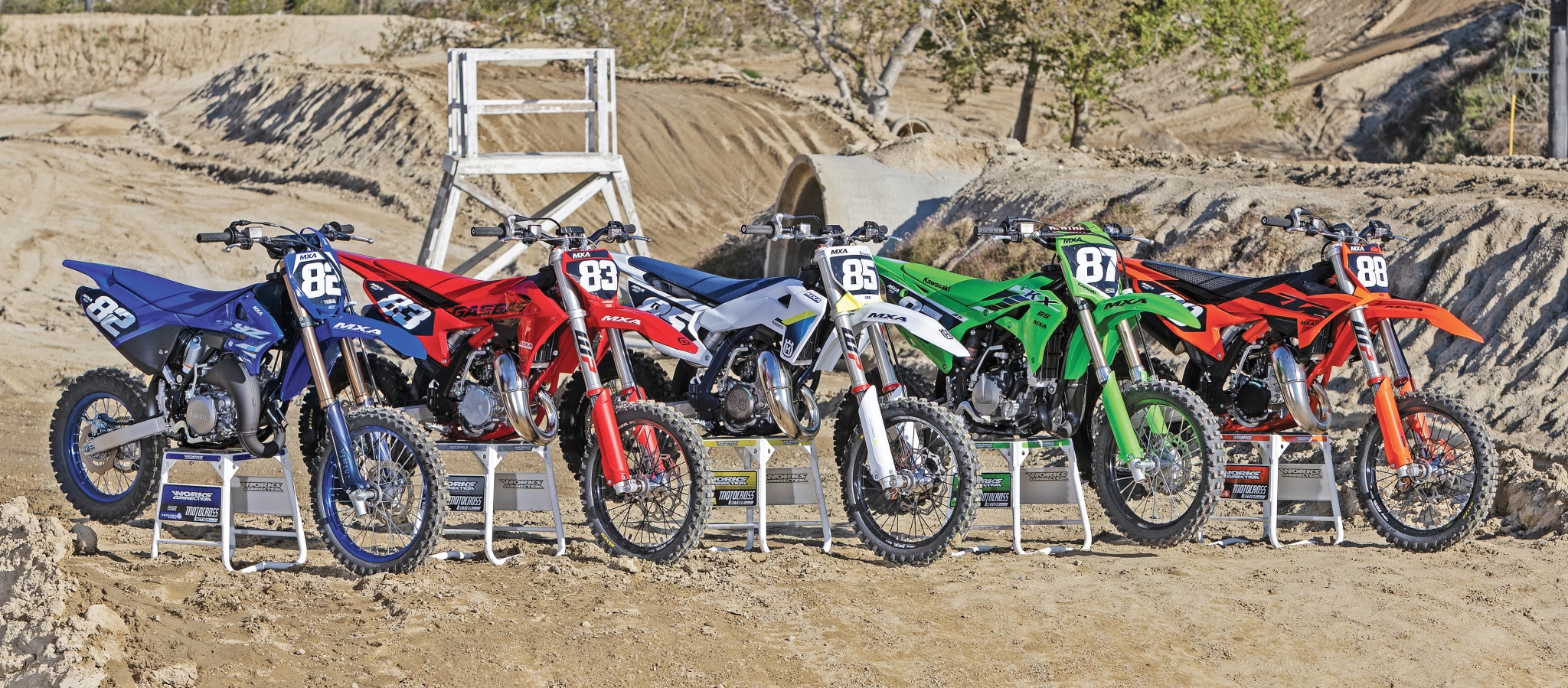
The MXA wrecking crew eats, sleeps and breathes motocross. We love testing the latest and greatest bikes, parts and gear, and we don’t mind if what we’re testing isn’t the most high-end offering available. Sometimes, it’s the oddball bikes and parts that are the most fun to test. We do get tired of writing about the same thing, though. Sadly, we’ve neglected the mini-cycle market over the years because the OEMs rarely make changes to their minis.
Another reason mini-cycle tests have been scarce is that reliable young test riders are hard to come by. The young riders we used for our 2022 Yamaha and Kawasaki mini-cycle tests are on big bikes now, and even the test riders we used last year on our DR.D project YZ85 build and, more recently, Aidan Zingg’s Loretta Lynn-winning KTM 112SX Supermini and Dane Pappas’ Loretta Lynn-winning GasGas MC85 have also moved up in bike size. For context, some of the riders we enlisted for this “2025 MXA 85cc Shootout” were Pee-Wee riders only four years ago!
Unfortunately, Suzuki gave up on their RM85. Its last update came in 2012, and they continued to produce the same bike until last year when they discontinued it. The Honda CRF150R four-stroke wasn’t included because it’s considered a Supermini model, and it’s not eligible for the 85cc class.
During our time testing Dane Pappas’ MC85, we learned that the AMA made a big change to the 85cc class for the 2024 season, coming out with a new rule concerning wheel sizes. Now, instead of running the stock 17-inch front wheel and 14-inch rear wheels, 85 riders can race with Supermini-spec “big wheels” (19-inch front and 16-inch rear). The FIM has allowed big wheels to race in the 85 classes in Europe for a long time now. MXA’s Josh Mosiman raced for Team USA at the 2010 FIM Junior World Championships in France, and they were racing on big wheels then.
The OEMs have sold big-wheel models in Europe for a while, but they’ve only recently started making big-wheel 85s for sale at the dealerships in the States. KTM was the first OEM to introduce an 85 with bigger wheels, a longer swingarm and stiffer suspension, then Yamaha followed suit in 2022 with their YZ85LW. Kawasaki’s approach is a little different, though. For a long time, they sold a KX100 Supermini, and it matched the KX85 in sales. Then, in 2022, thanks to encouragement from their Team Green amateur kids, Kawasaki updated the engine to the modern-day 112cc spec, becoming the only manufacturer to produce a showroom-stock Supermini. It’s turned out to be a smart choice for the green team as they now sell more KX112s than they do KX85s. Of course, KTM does sell a Factory 105cc top-end kit, but it retails for $900, and you have to put it on yourself. The 105cc Superminis are usually more reliable and easier to maintain than 112cc Superminis, but for the serious racer, the 105 kit is leaving an extra 7cc of displacement on the table.
For MXA’s editors, one of the difficult aspects of being an MXA test rider is that we have to explain the differences between KTM, Husqvarna and GasGas models. In the big-bike world, they are all platform-shared machines. They have the same engines, frames, and suspension components, but with different air boxes, suspension settings, handlebars, tires and brakes.
MXA test riders go to bat for the Austrians by trying to help explain the differences, but they aren’t helping themselves much in the mini-cycle ranks. The 85SX, TC85 and MC85 are practically identical. The parts that differentiate these three machines are the plastics, fuel tanks and subframes. The fuel tanks are all basically the same, only with different mounting points for the shrouds, and the subframes are almost the same, only the Husky is slightly different because it has a closed-off airbox when compared to KTM and GasGas with their wide-open, Superman-seat grab handles, under the seat, flowing more air to the intake.
Because the Austrian trio of 85s are all so similar, we won’t waste any pages talking about them individually—and will often use the KTM name when referring to all three. In this test, we’ll compare the Austrian bikes to the Yamaha YZ85 and the Kawasaki KX85.
 The KTM 85’s rider triangle geometry and plastics are all a shrunk-down replica of KTM’s big bikes. It retails for $6749.
The KTM 85’s rider triangle geometry and plastics are all a shrunk-down replica of KTM’s big bikes. It retails for $6749.
AUSTRIAN TRIO: 2025 KTM 85SX, HUSQVARNA TC85 & GASGAS MC85
As of 2025, the Austrians have officially overhauled all of their motocross models. The big bikes were all new in 2023, then the KTM 50s and 65s were all new in 2024, and now the 85s have also joined the fold with new frames, updated suspension, and updated engines, all following the same direction that KTM set forward in 2023. Starting two years ago, the KTM Group made a big push on their chassis to create more stability and balance. In 2023 the big bikes did get heavier and stiffer, and they were eventually refined for 2025 with all new frames, head stays and swingarms. Now, the same search for more balance and straight-line comfort has focused on their mini-bikes.
The 2025 KTM, Husqvarna, and GasGas 85s all have new frames and new plastics, making the bikes look like shrunk-down versions of their full-sized 250, 350 and 450 models. Up until 2025, the rider triangle (footpegs to seat to handlebar geometry) was unique for the mini-bikes, designed with less forethought than the big bikes. Now, the geometry has been matched with the rider triangle of the KTM big bikes. This means that the seat is flatter and the handlebars are lower, allowing riders to get their head over the front end easier and ride with the more modern style of today. The footpegs are also new, mimicking the big bikes as well.
 Husqvarna is slightly different from GasGas and KTM, it has a closed-off airbox cover (as seen under the seat).
Husqvarna is slightly different from GasGas and KTM, it has a closed-off airbox cover (as seen under the seat).
Motocross Action has been around for 53 years, and it’s clear to us that the kids are better than ever. The old saying, “Monkey see, monkey do,” certainly applies to the young riders of 2025, who’ve grown up with unprecedented levels of access to video footage of the world’s best riders training and racing. James Stewart revolutionized the way racers jump with the “Bubba scrub” in the early 2000s, and two decades later, 6- and 7-year-old pee-wee riders are scrubbing off every jump. Thanks to social media constantly metering out videos, young kids can absorb new-age riding styles quicker than ever. When Ryan Villopoto and Mike Alessi were amateur phenoms, social media wasn’t around to broadcast their training to the world. Even in Adam Cianciarulo’s amateur days, riding videos weren’t as readily available as they are now. Today, it’s much easier to study the pros and copy their style, not to mention the fact that aftermarket tuners have only gotten better at boosting horsepower on 85cc and Supermini engines.
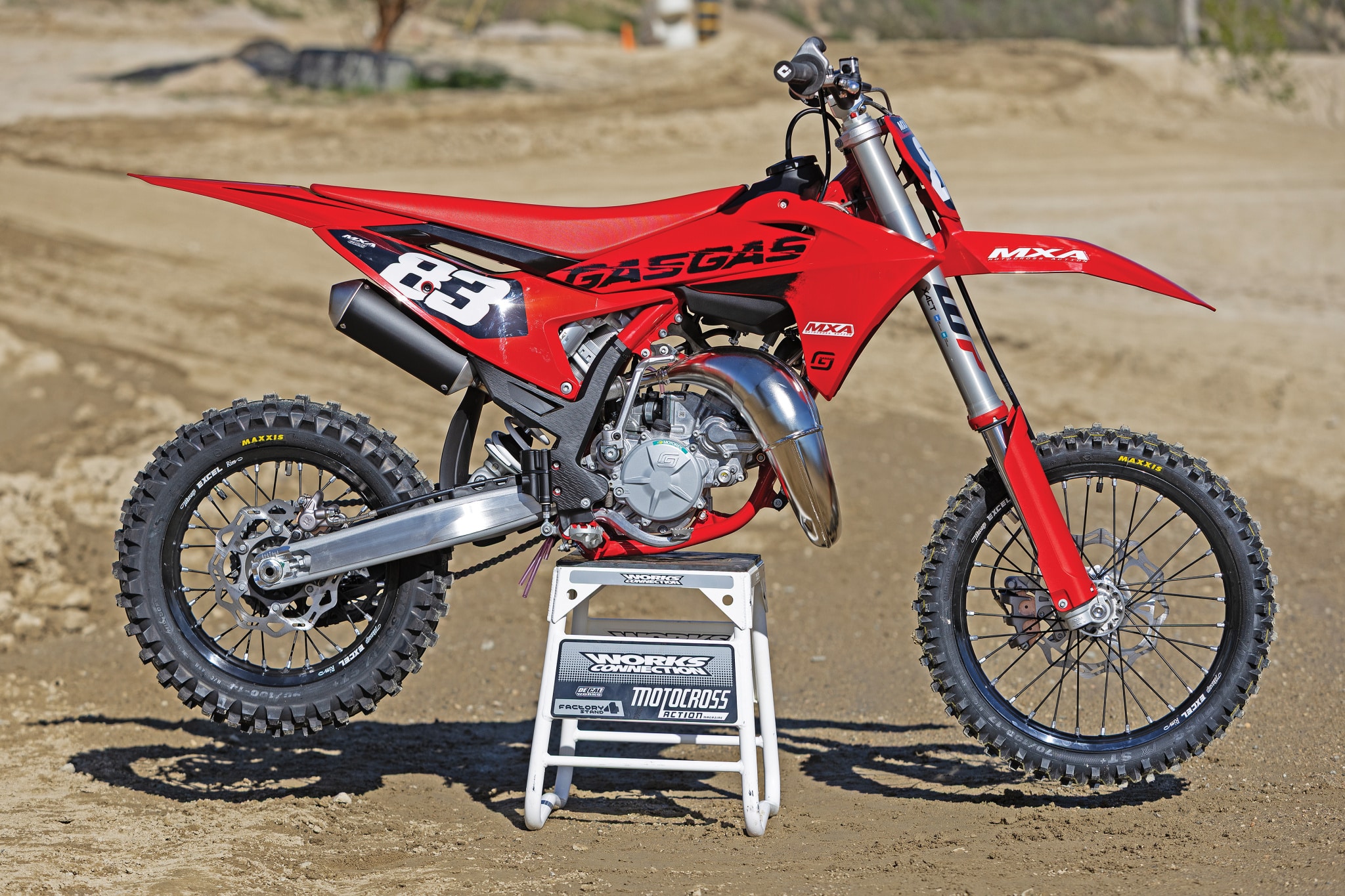 Unlike the big bikes, the GasGas MC85 is no different than the KTM and Husky on performance parts, yet it has a more affordable price tag at just $6449.
Unlike the big bikes, the GasGas MC85 is no different than the KTM and Husky on performance parts, yet it has a more affordable price tag at just $6449.
Because the kids are going faster than ever, the bikes need to be stronger than ever. The steering-head angle on the new frame has been reduced by 1/2 a degree, and the steering tube has been moved 6mm closer to the center of the chassis to create more stability. The Austrian 85s also have a new WP shock that is 16mm shorter to accommodate the new subframe and its new mounting point on the upper tube of the frame. The shock is also now 6mm further forward, although it still mounts directly to the swingarm (sans a linkage) in the PDS format. This sets the Austrians apart from Kawasaki’s and Yamaha’s offerings, which come with linkages. The new mounting point allows for a more compact rear shock design with a shorter stroke (305mm in 2024 and 289mm in 2025). We get it—less suspension might sound like a bad thing, but the KTM engineers found that it significantly improved control over rebound and compression in the rear shock. It gives the bike a more planted feel, more traction and better overall handling. On the front, they still come with WP XACT air forks.
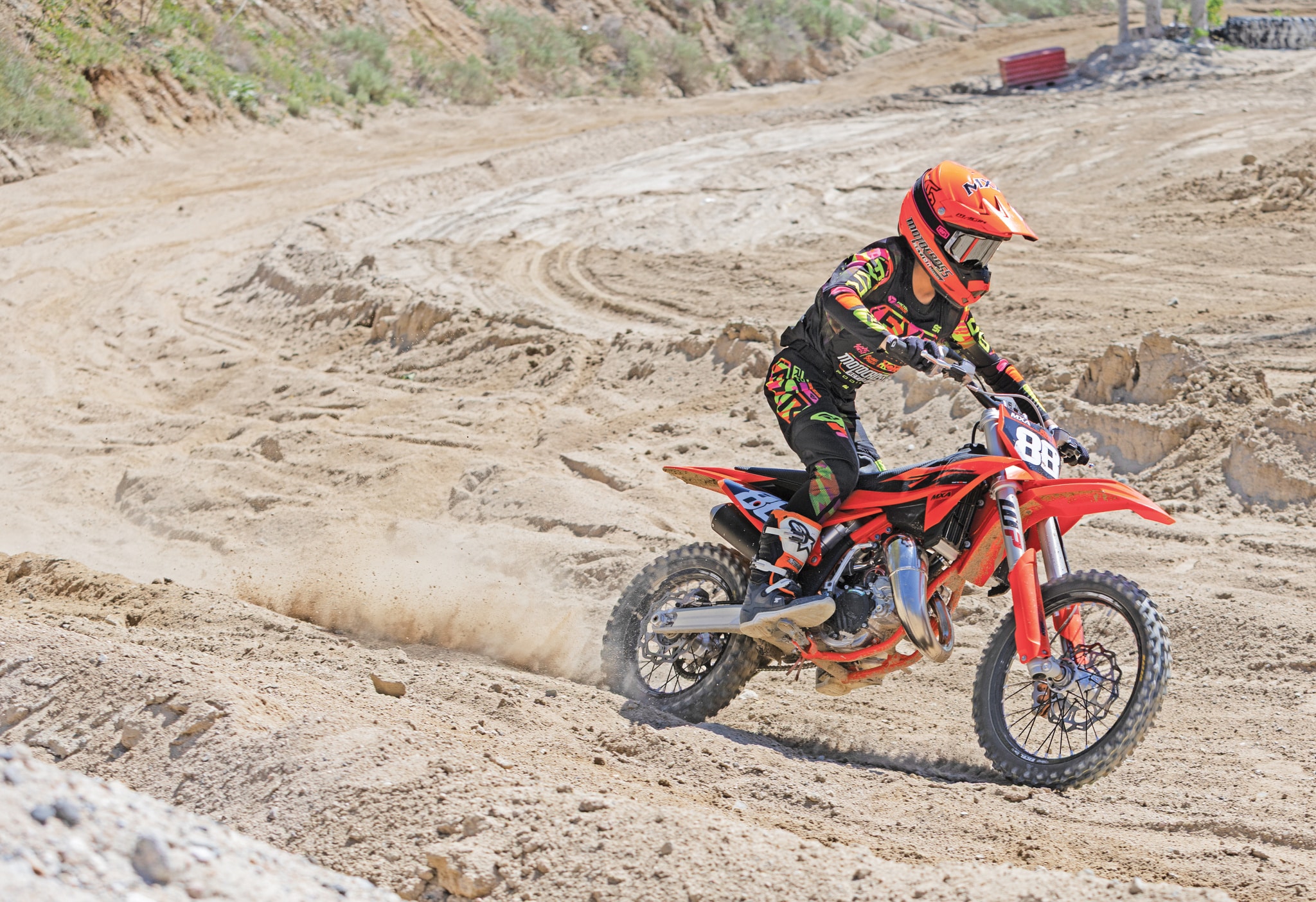 The new-generation KTM 85SX is impressive in the handling department.
The new-generation KTM 85SX is impressive in the handling department.
Working together with the new frame and shock is a new swingarm. It’s slightly lighter than before, but the main improvement is that it has more material underneath the shock to create more stability. Loretta Lynn Champion Aidan Zingg helped KTM with pre-production testing on the 2025 model, and he liked it so much that he ended up welding a plate to the bottom of his 2024 KTM Supermini swingarm to try to achieve the same straight-line comfort. It worked for him, and he won Loretta’s on it; now that same concept comes stock on the 85SX, TC85, and MC85. Additionally, the rear axle has been upped from 18mm to 20mm.
Although most of the focus was on the chassis, the Austrian 85s did receive updates to the powerplant. The engine has been rotated 3 degrees upwards for weight distribution and to have a more direct connection point with the swingarm. The new engine has been made stronger in the low-to-mid rpm range, too, with a new cylinder head, new spark plug, new pipe and new jetting specs. The shift drum was also updated for added durability, and all three of the Austrian bikes come with Maxxis MX-ST tires.
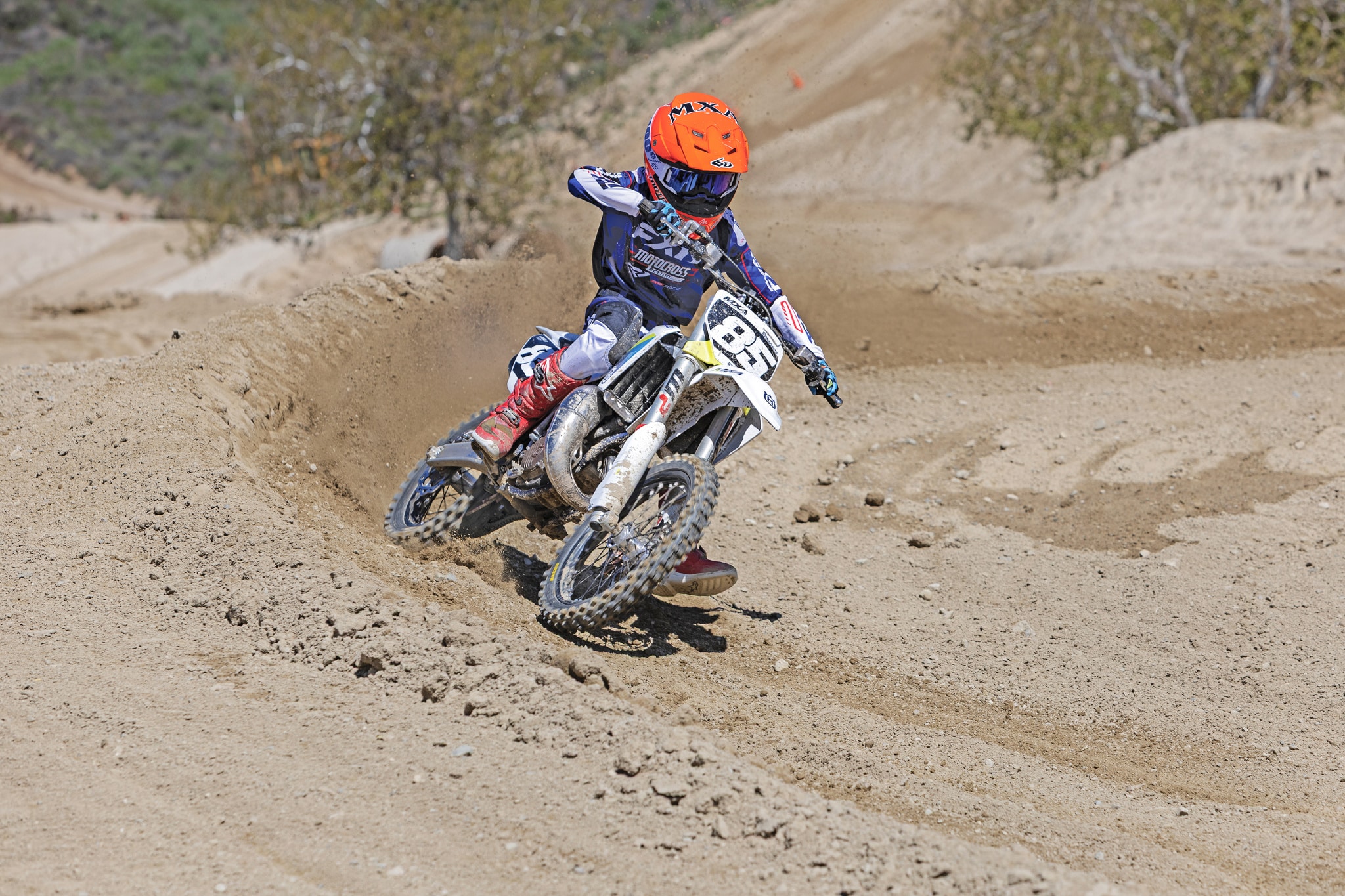 Even though the brakes, suspension, tires and all are still the same as KTM, the TC85 retails for $6949, a $200 upcharge.
Even though the brakes, suspension, tires and all are still the same as KTM, the TC85 retails for $6949, a $200 upcharge.
From the first test on the new-generation Austrian 85, our test riders were impressed with how comfortable they felt on the new bike, mentioning it felt faster and more in control than before. They also noted that it felt smaller, thinner, and lighter than the previous generation. Even the young riders’ parents could tell from the sidelines that their kid was more comfortable. On the bottom end, the KTM engine has great recovery, allowing you to get right back into the meat of the power any time you bobble. The stock jetting in the Keihin PWK 28mm carburetor ran slightly fat from the dealership, but thankfully, the Austrians give you extra jets when you buy the bike.
The stock bike comes with a 145 main jet and 55 pilot jet with the needle on the third setting and the air screw at 1-1/2 turns out. We switched it to a 142 main and 52 pilot, leaving the needle in the third position, and we’ve run this jetting for the last 20 hours on our 2025 GasGas MC85 leading up to the shootout. We should also mention that the stock clutch has held up strong without breaking a sweat.
In motion, the mini wrecking crew felt the KTM, Husky and GasGas were the same — because they pretty much are. However, our most picky tester did feel that the Husky was slightly less exciting on throttle response due to the closed-off airbox limiting airflow into the engine. With the very open concept of the KTM/GasGas airbox, the engine pulls longer and runs leaner, making for a more exciting two-stroke engine. Compared to the 2024 KTM 85SX, how the new bike handled at speed was the standout comment—a nod to KTM’s engineers for all of their efforts towards updating the chassis.
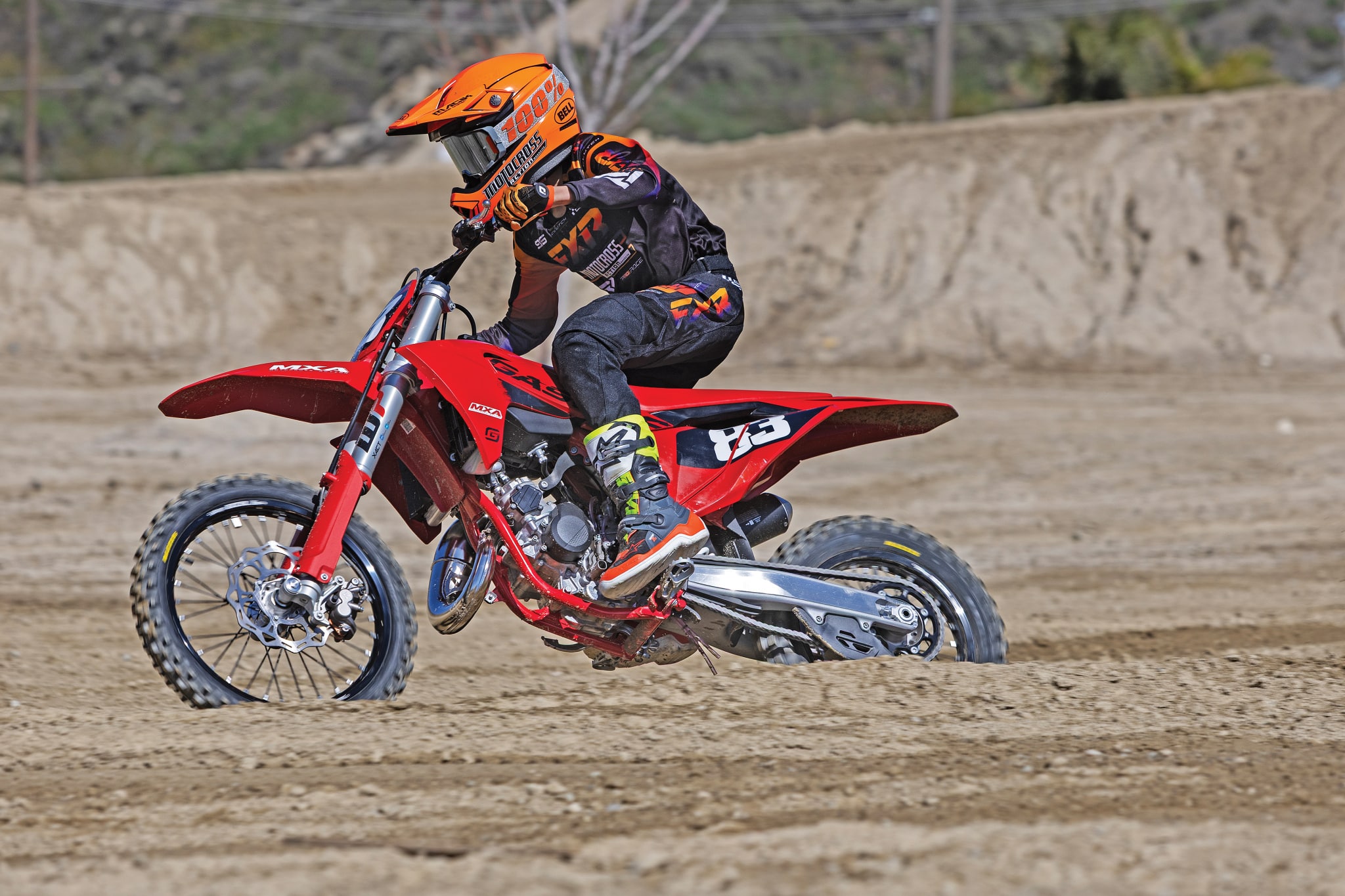 With the red plastics and red frame, the GasGas MC85 stands out on the track.
With the red plastics and red frame, the GasGas MC85 stands out on the track.
The negative comments were few on the KTM, Husky and GasGas 85s, but multiple test riders did say that the handlebars were lower than they were used to and that they would be more comfortable with taller bars. We were also surprised to break a rear fender on our 2025 GasGas MC85 when our tester had a small crash—usually their plastic is pretty strong. Also, accessing the clickers on the rear shock is not possible with the shrouds covering the adjusters. We drilled holes to make easier access for the high- and low-speed compression adjusters. Finally, through our testing of top-level racer-oriented bikes (like Zingg’s Supermini and Pappas’ MC85), we’ve learned that the stock Formula brakes that come on the 85s aren’t the same quality as KTM’s big-bike Brembo brakes. Most 85cc riders won’t have a problem with the stock Formula brakes, but if your kid is fast enough to qualify for Loretta’s, he’d appreciate upgrading to the more powerful stronger Brembo brakes that we tested when riding Aidan and Dane’s mini-cycles. They fit without issue.
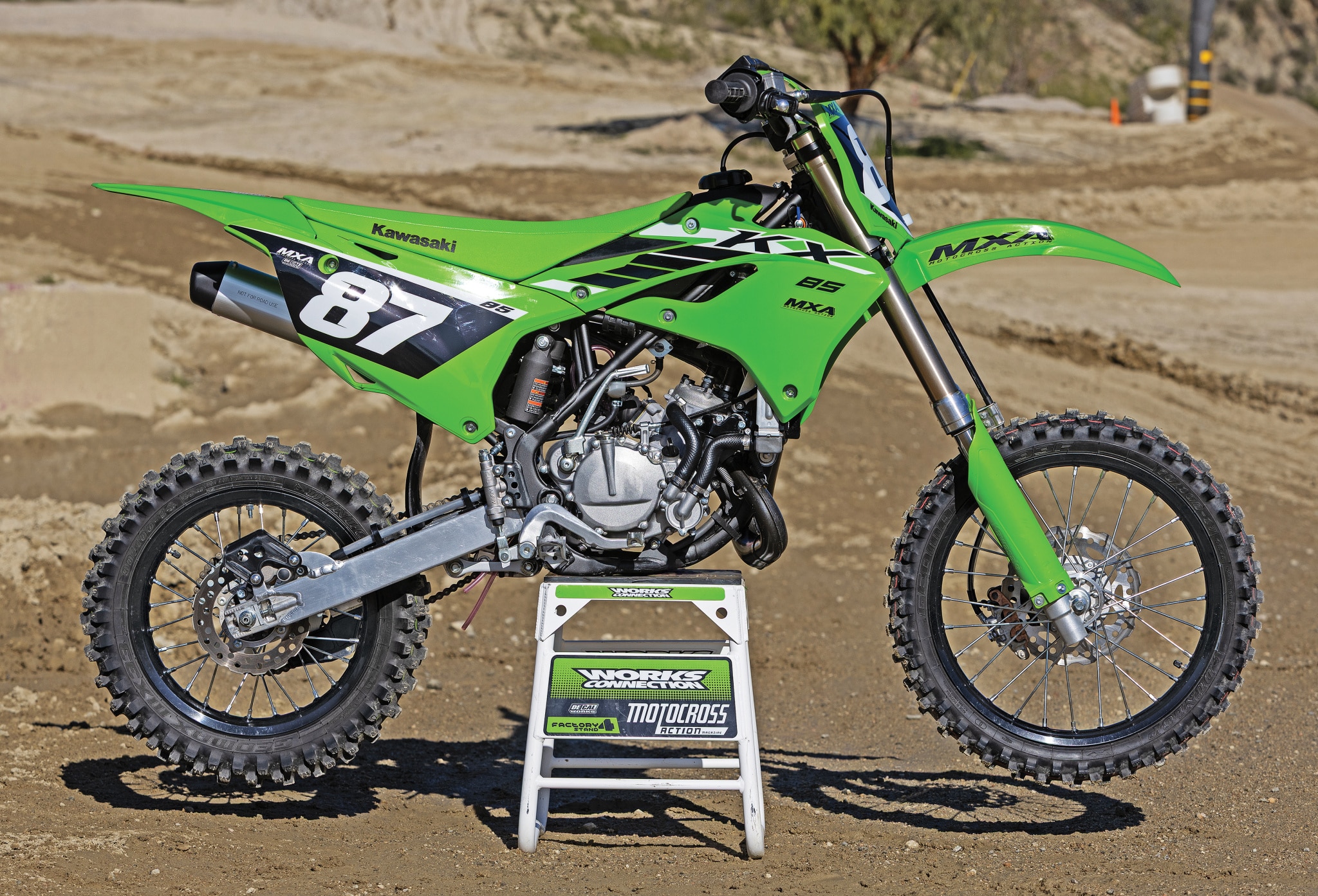 The Kawasaki KX85 is the most outdated bike of the bunch, but it also has the friendliest price tag, at just $4949.
The Kawasaki KX85 is the most outdated bike of the bunch, but it also has the friendliest price tag, at just $4949.
THE GREEN MACHINE: 2025 KAWASAKI KX85
Kawasaki’s most recent KX85 updates came in 2022. It was the year they replaced the KX100 with the KX112 Supermini, and they updated the KX85 with a newer and stronger six-speed transmission, new bodywork, new Dunlop MX33 tires and better cooling, thanks to the new shrouds. Before the 2022 model, the Kawasaki KX85 was last updated in 2014 when it gained a new engine. What did they change in 2014? Increasing the flow through the cylinder of a two-stroke is the easiest way to up the horsepower, and Kawasaki reshaped the exhaust ports in 2014 and increased their port diameter (from 32mm to 33mm). With the exhaust port dramatically changed, the power valve was also redesigned. Plus, the KX85 received a new head, new 28mm Keihin PWK carburetor and an updated crank. They also increased the water volume of the single, right-side radiator by making it taller and wider to keep the new engine cool. The suspension, brakes, handlebars, gas tank and bodywork were all updated in 2014 as well. We appreciate the small number of updates in 2022, but truthfully, this is an 11-year-old bike that could use another revamp today.
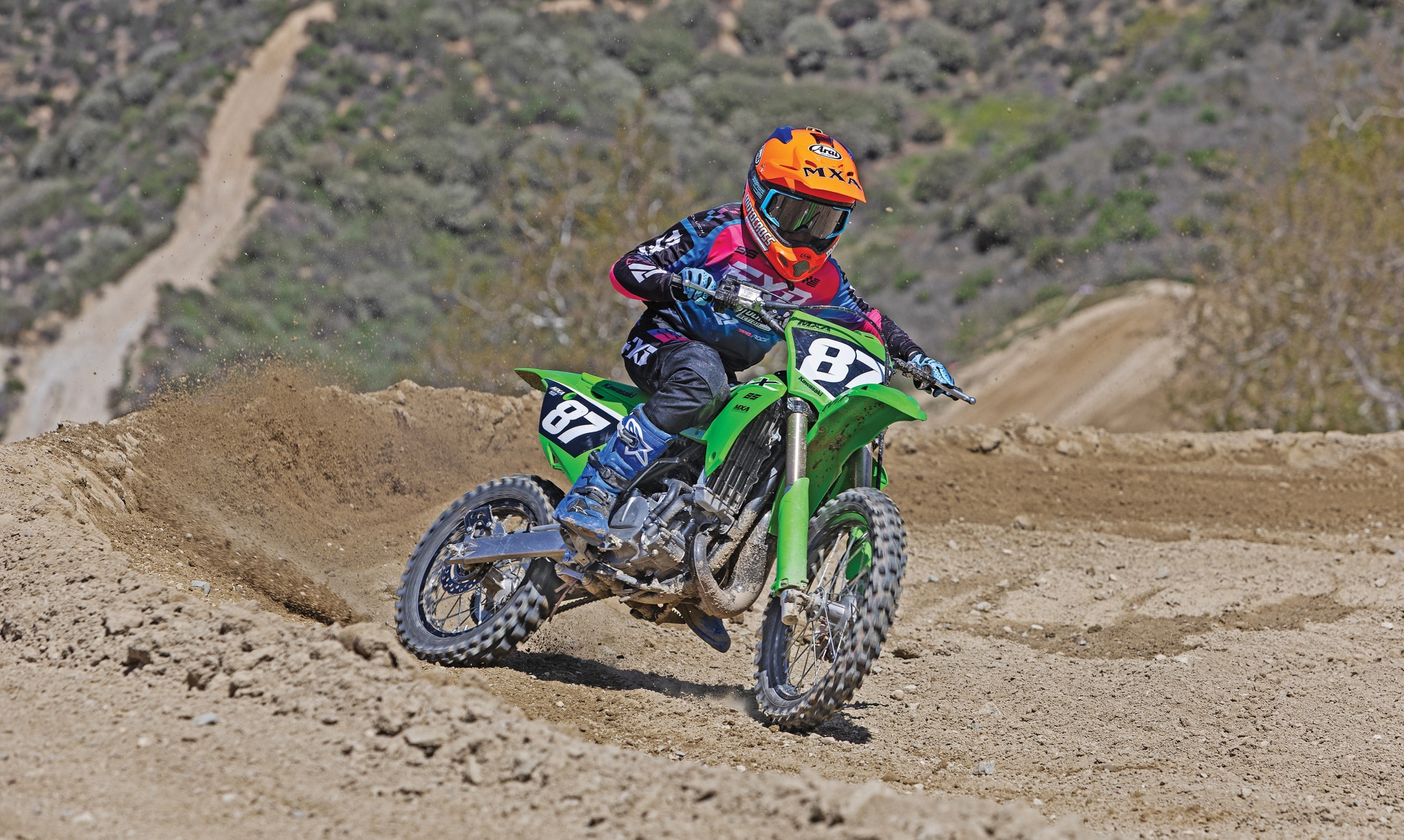 The KX85 feels smaller than the Austrian bikes and is great for shorter riders.
The KX85 feels smaller than the Austrian bikes and is great for shorter riders.
While testing the KX85, we went straight to the source of power at Pro Circuit by grilling Mitch Payton to learn the history of this bike. Mitch is always busy running the factory race team and everything else at Pro Circuit, but we also know that he has a soft spot for Kawasaki’s mini-bikes and that he’s a big proponent for them, always bugging the Japanese to make updates to their minis. Mitch enlightened us by sharing just how tried and true this powerplant is. The layout of the engine and the cylinder design have been the same on this bike since Ricky Carmichael rode it (1991–1995). Then, when James Stewart rode it, from 1995 to 2000, Kawasaki came out with a power-valve version, which kept the same cylinder and cases. By the time Adam Cianciarulo rode it (2007–2012), the engine was still the same, but Mitch told us that it got better because Pro Circuit had a new mod for the power valve to improve the bottom end. Austin Forkner (2010–2014) was the next star who rode the KX85, and just as he was spending his last year on it, the engine came with that updated cylinder and power valve, but it was still using the same bottom end.
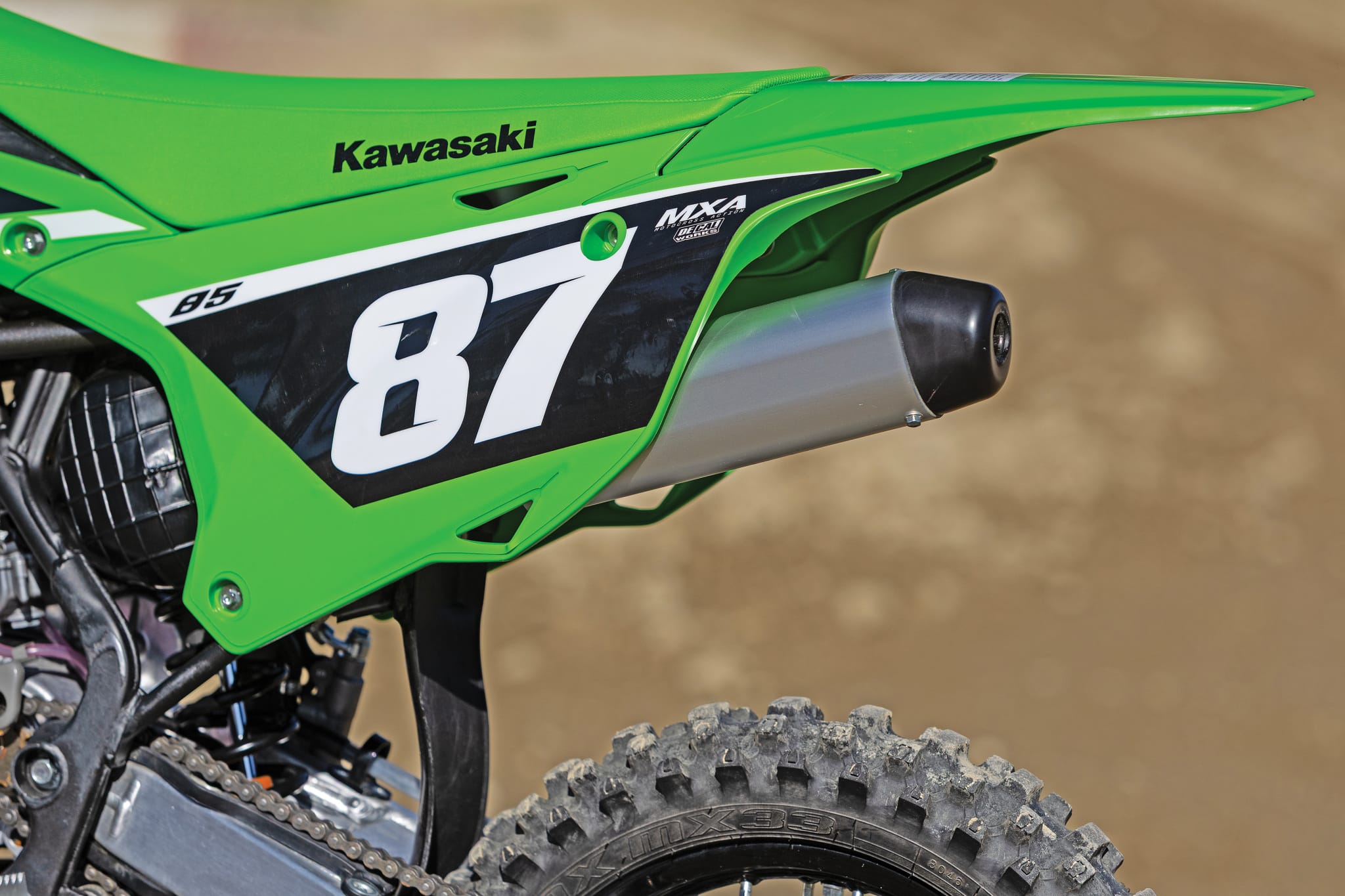 The KX85 is also the only motorcycle being sold today with a left-sided silencer.
The KX85 is also the only motorcycle being sold today with a left-sided silencer.
It’s funny to list off all of the stars who have spent time on KX85s, because we know how this bike is in stock form. It obviously has potential, but it feels like the Kawasaki KX85 was designed for beginner and novice-level riders. The engine is mellow compared to the other bikes, and it takes skill to keep it in the power. With a lackluster bottom end, riders need to be quick with their left foot to keep it in the right gear, and they have to carry more momentum in the turns to keep the engine on the pipe. If little Johnny has the ability to carry good roll speed in the turns, and if he’s not scared to clutch it, the midrange power is decent on the KX85, but getting there is tough.
As for the handling, the KX85 comes off the showroom with the softest suspension, only good for lighter novice-level mini-cycle riders in the 60–80-pound range. One positive aspect about the KX85 suspension, though, is that it is consistent and predictable. Even though it was too soft, it wasn’t harsh when riding low in the stroke.
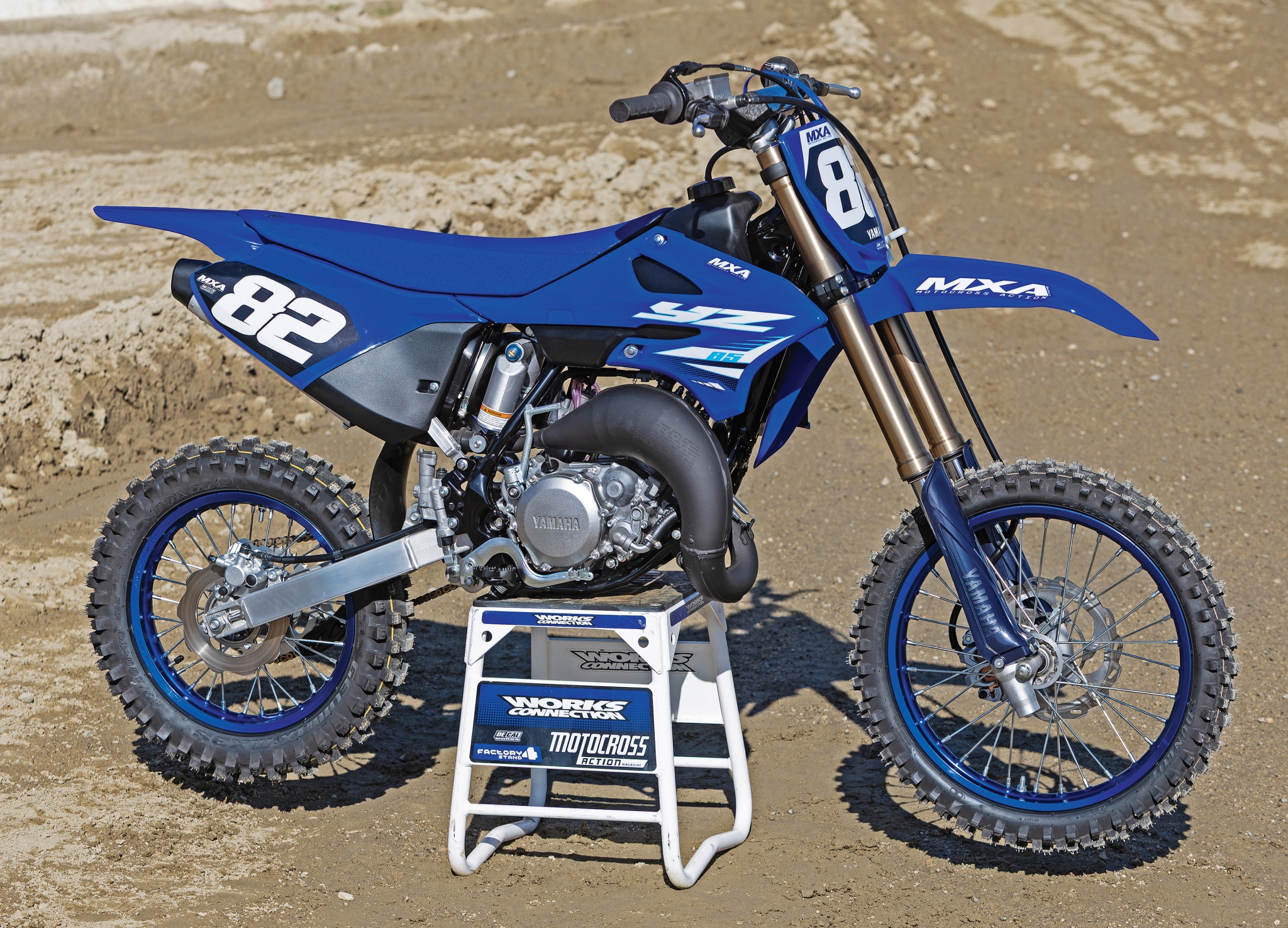 The YZ85 has an MSRP that’s only $50 more than Kawasaki ($4999), yet it has more advanced suspension and a better engine.
The YZ85 has an MSRP that’s only $50 more than Kawasaki ($4999), yet it has more advanced suspension and a better engine.
THE BLU CRU: 2025 YAMAHA YZ85
While it’s true that KTM has long been the class leader of the mini-cycle ranks at the Amateur National racing level, we have to give Yamaha kudos for their efforts in modernizing their YZ85 models. KTM copied their big-bike chassis and bodywork designs for 2025, but Yamaha did it three years ago. The 2022 model year was a big one for the boys in blue, as they updated all of their two-strokes across the board. The YZ125 gained an updated engine, new subframe, new seat and new bodywork, while the YZ250 just gained the same new subframe, plastics, and seat.
The 2022 updates made the YZ85 flatter, smoother, narrower and more symmetrical. If any of our readers owned a 2021-or-earlier-model YZ85, you’ll remember how difficult it was to keep graphics on the left side of the bike because the sticker went straight onto the fuel tank, like the Suzuki RM85. It was a pain for graphics companies, especially because the fuel in the plastic tank would cause the graphics to bubble if the graphics didn’t have small slits or holes.
 The YZ85 was more competitive than we expected in this shootout, every tester had good things to say about it.
The YZ85 was more competitive than we expected in this shootout, every tester had good things to say about it.
The 2022–’25 YZ85 styling matches the big-bike two-strokes with a new fuel tank and stylish-looking shrouds, which are slightly wider at the seat, but they end up being 13.5mm skinnier at the radiator, making it easier for riders to move around in the cockpit.
Yamaha also replaced the banana-style seat with a modern YZ125 copy. It was made 3mm lower at the front, 12mm taller in the middle and 20 percent narrower. Our test riders appreciated the modern styling of the YZ85. It is certainly better than the previous generation for taller riders, and it helps riders of all sizes get forward on the bike to put more weight on the front end in turns. To accommodate the flatter seat, Yamaha added an aluminum subframe, which dropped half a pound and made room for the straighter intake tract.
Additionally, the steel frame came with stronger engine mounts, and a beefed-up rear brake-master cylinder bracket holds the new rear brake-master cylinder, which requires less pedal stroke to slow the rear wheel. The swingarm was also new in ’22 as a one-piece cast design instead of the previous three-piece design. And, the axle was changed from a hollow 17mm axle to a solid 19mm axle.
 The YZ85 was last updated in 2022, but the engine hasn’t changed since it gained a powervalve in 2019.
The YZ85 was last updated in 2022, but the engine hasn’t changed since it gained a powervalve in 2019.
Pre-2022, the last YZ85 updates came in 2019 when it gained an updated engine with a new power valve (increasing power from 3000 to 9000 rpm), plus updates to the chassis, brakes and suspension. It was also in 2019 when Yamaha moved their YZ85 from the 7/8-inch handlebars to 1-1/8 inches. Before that, the YZ85 gained new bodywork in 2015 and a new engine back in 2002.
Fast-forward to now, and the 2025 Yamaha YZ85 is proven to be a well-suspended, durable, and competitive 85cc machine. Our test riders mentioned that the YZ85 felt smaller than the Austrian bikes, and they appreciated how easy it was to shift, and how easy the clutch and throttle were to pull, even though stiffer clutch springs would help with clutch durability. Like KTM and Kawasaki, it comes stock with Keihin’s PWK 28mm carburetor, and the stock jetting has been working well for our test riders. We just went one position up on the needle to lean it out, and we set the air screw at 1-1/4 turns out.

MXA’S 2025 85cc SHOOTOUT RANKINGS
Although our test riders were able to find positive aspects of each bike, there can only be one winner—well, actually, three in this case. Because the Austrian trio of 85s are all the same, we’ll count them as one. Yes, if you want to distinguish the three, we did mention that the KTM/GasGas bikes breathe better than the Husky, but it was such a minor difference that most riders won’t notice it. We should also mention that the dads of this shootout all preferred the Husky because the rear fender was perfectly shaped for grabbing and throwing the bike on the stand.
THIRD PLACE: 2025 KAWASAKI KX85

Historically, Kawasaki’s KX85 has been very successful in the amateur ranks. Even though it’s outnumbered by the Austrian bikes at the races, you wouldn’t know it if you only looked at the podium finishers. The Team Green managers deserve some credit for their expert scouting skills, because although their stock bikes have some room for improvement, they’ve been able to hire some impressive talent and aftermarket tuners like Pro Circuit, who have been able to make the bikes work. Ricky Carmichael and James Stewart raced KX80s, Ryan Villopoto spent some time on a KX80, Adam Cianciarulo rose to fame on a KX85, as did Austin Forkner, Ryder DiFrancesco, Jett Reynolds, Carson Mumford, Landen Gordon and others. Thanks to Pro Circuit, there are all kinds of cool aftermarket parts available for the KX85 platform, including the A-kit Showa suspension, shock linkages, CNC-machined triple clamps, exhaust pipes and silencers, and, of course, all the best engine and carburetor mods.
The MXA mini wrecking crew tested Landen Gordon’s 2023 Loretta Lynn-winning Team Green KX112 Supermini, and they were blown away by it, but this shootout reminded us that Kawasaki’s stock 85 and their factory Supermini are two very different things.
Across the board, our test riders admitted that the KX85 was down on horsepower when compared to KTM and Yamaha. They had to use the clutch more to get it into the power, and then once it got going, the KX85 petered out on top, while the YZ and KTM pulled much further. The slower engine also made the bike feel heavier on the track, especially over jumps.
As for ergonomics, the KX85 was noticeably smaller than the other machines, yet our shortest test riders felt that it rode high in the rear. The cockpit was also tighter on the KX than its competitors, but it got better once we rotated the bar mounts into the forward position.
What does the KX85 need to climb up the ladder in our rankings? A new engine is first on the list. Obviously, the KX85 can win with the right rider on it and enough money spent with the best engine and suspension tuners, but this bike is not race-ready in stock form. The engine is too slow, and the suspension is too soft. The Kayaba suspension on the Yamaha YZ85 is like A-kit components compared to the basic technology inside the Kawasaki suspension. The clutch springs are also soft on the stock KX85, which makes it nice for pulling the clutch in but not great for longevity. Plus, you can’t adjust the clutch on the fly like you can with the Yamaha if it starts to heat up. The footpegs are also slippery on the KX85, and the throttle-cam leverage is too long (a quick-turn cam would help). As for the handlebars, the 7/8-inch handlebars bend easily, but they also sweep back too far, giving the cockpit a cramped feel in stock form. Unrelated to performance, the bottom cradle on the frame is terrible for putting the bike on a stand. You need a special KX85 stand with a rectangular hole in it to keep this bike from falling off.
Of course, most of our complaints with this bike can be fixed if you drop it off at Pro Circuit with a blank check, but then you can’t brag about how affordable this bike is, because the $1800 you save on MSRP will be quickly tacked onto your bill at Pro Circuit.
SECOND PLACE: 2025 YAMAHA YZ85

With KTM’s clear advantage in two-stroke engines (at least the carbureted ones) and their investment in this new chassis, we fully expected KTM to win this shootout. However, we were surprised by how close the YZ85 was. All four of the test riders who chose KTM first chose Yamaha as a close second. We also had our mini test rider specialist, Brian Medeiros (5-foot-6, 30 years old, 130 pounds, AMA pro), spin laps to confirm what the youngsters were saying, and he actually preferred the YZ85, citing that the comfort and stability of the chassis and suspension stood out to him. However, even he couldn’t deny the more powerful engines on the Austrian trio.
Yamaha’s Kayaba suspension has more adjustability than Kawasaki’s. It comes with compression and rebound adjusters on the forks, while Kawasaki’s simple design only has a compression adjuster at the bottom of the fork legs, and their suspension is very soft.
One big YZ85 difference compared to the KTM is that the Yamaha comes with spring forks. They’re more expensive to set the correct spring rate (buying springs versus adding or subtracting air), but the spring forks are also easier for parents to take care of. Air forks require a close eye to keep them at the right air pressure throughout a hot day of riding (air expands with heat), and it’s easier to go wrong with the settings if the parents forget to check the pressure.
Our test rider riders liked the suspension on the YZ85. It did feel a little stiff for our lighter riders, but they were able to get comfortable with a few adjustments to the clickers. When it comes to buying bikes, our shorter riders gravitated towards the YZ85 platform. One complaint our young test riders had when comparing the KTM and Yamaha was about the steering radius. Even though the KTM 85SX has an extra 2 degrees of steering radius available when compared to its predecessor, it turns much less than the YZ85. In the pits or on tight trails, the KTM is frustrating because it doesn’t turn sharp enough. But, on the track, our test riders appreciated the combination of the tighter steering radius and the more raked-out front end because the KTM prevented them from making mistakes in the corners, smoothing out their corner arcs. For our test riders, the steeper head angle of the Yamaha made it easier to tuck or knife the front end in the turns.
Parents liked the more friendly price tag of the YZ, which retails for $1750 less than the KTM 85SX. We also appreciate that Yamaha offers a big-wheel model. At $5199, the YZ85LW (Large Wheel) is only $200 more than the standard YZ85, and set up and ready to go with the bigger wheels, longer swingarm and stiffer suspension for the serious racers who are trying to qualify for Loretta’s. If little Johnny isn’t on the tall side, the bigger wheels will eat up braking bumps much easier and be a benefit for most serious racers. Plus, the YZ85 comes with Dunlop’s MX3S tires, which our test riders like more than the Maxxis tires that come on the white, orange and red bikes.
As for durability, we haven’t had any big issues with the YZ85. Our test bike has 35 hours on it, and our YZ85 tester is a fast intermediate-level rider weighing in at 92 pounds—and he’s hard on the clutch! We have been able to get 12–15 hours out of a clutch before he notices it slipping and we have to replace it.
 KTM takes the trophy, but really GasGas and Husky share in the glory this time because in the mini bike ranks, they’re the same.
KTM takes the trophy, but really GasGas and Husky share in the glory this time because in the mini bike ranks, they’re the same.
FIRST PLACE: 2025 KTM/HUSKY/GASGAS 85s

The orange, white and red 85s took the cake in the “2025 MXA 85cc Shootout,” with four out of the five riders picking the Austrian trio as number one. Even though KTM has been a leader in the 85 class for a long time, they didn’t settle for good enough. The Austrian engineers have invested time and money into redesigning their 85 models, and the MXA mini wrecking crew is thankful for it!
The KTM, Husqvarna and GasGas engines were stronger off the crack of the throttle and stronger on the top end than they were in 2024, and they were considerably stronger than the blue and green machines. At $6450 (MC85), $6750 (85SX), and $6950 (TC85), the Austrian bikes are more expensive than the KX85 ($4950) and YZ85 ($4999), but the extra $1500 buys you a race-ready bike.
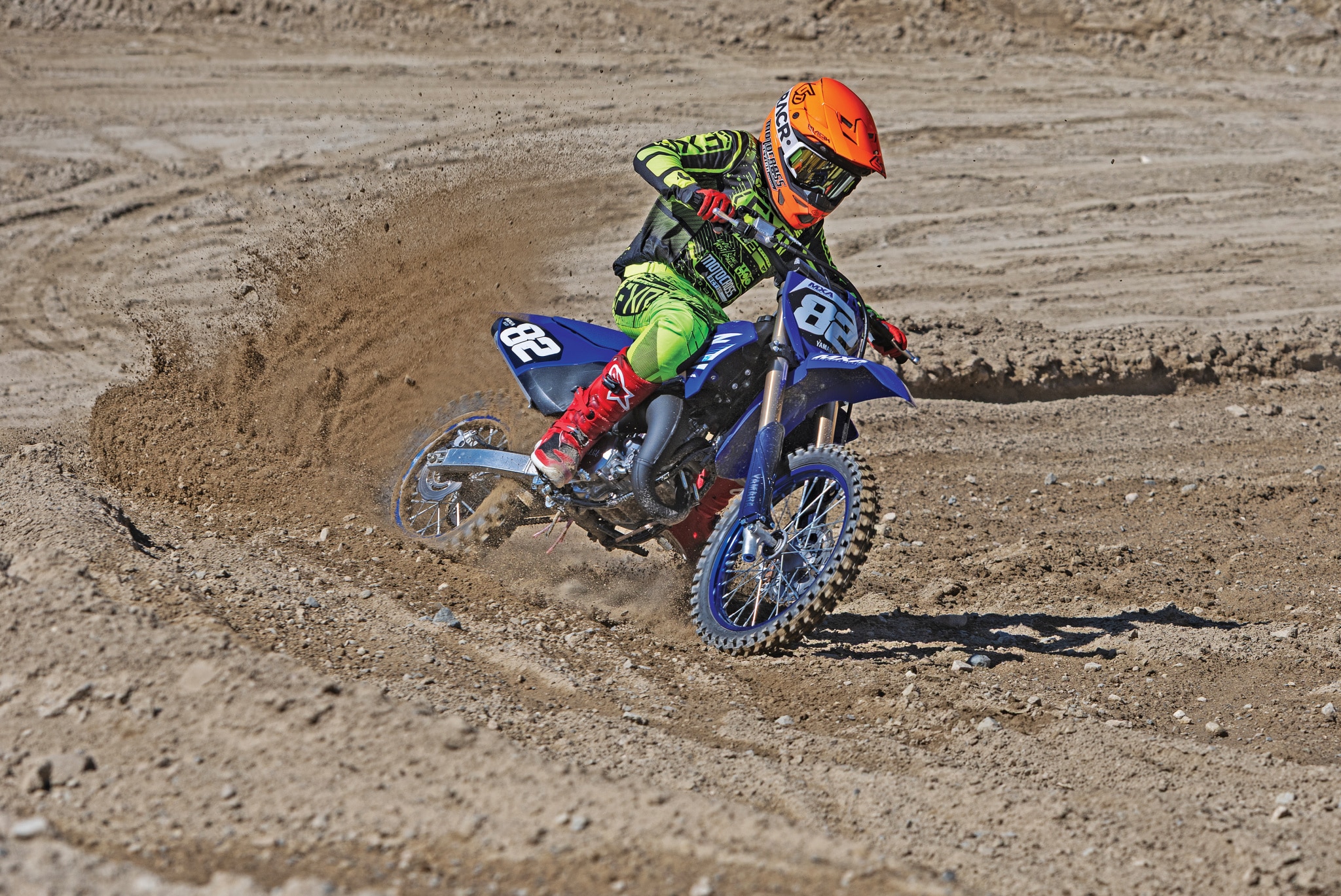 The Kayaba coil spring forks are a positive aspect about the YZ85, they require much less menial maintenance at the track.
The Kayaba coil spring forks are a positive aspect about the YZ85, they require much less menial maintenance at the track.
The Austrian bikes were made to rev, while the blue and green steeds need to be shifted more often to get the power going. Getting into more of the finer details, we appreciate that on the KTM you can adjust the rear brake pedal position and the amount of free play it has so that the rider doesn’t accidentally drag the rear brake. Surprisingly, on the Yamaha and Kawasaki models, you can only adjust the position, but not the free play. The KX85 and YZ85 shocks have low-speed compression and rebound clickers, but they are missing the high-speed compression adjuster that KTM has. The stock ODI lock-on grips are also much more comfortable for young riders than the hard rubber grips of the Japanese bikes. One unique complaint: the fork lugs on both the YZ and KX extend down past the front axle, causing them to drag in ruts, which is a problem for riders racing on rutted tracks like Loretta’s.
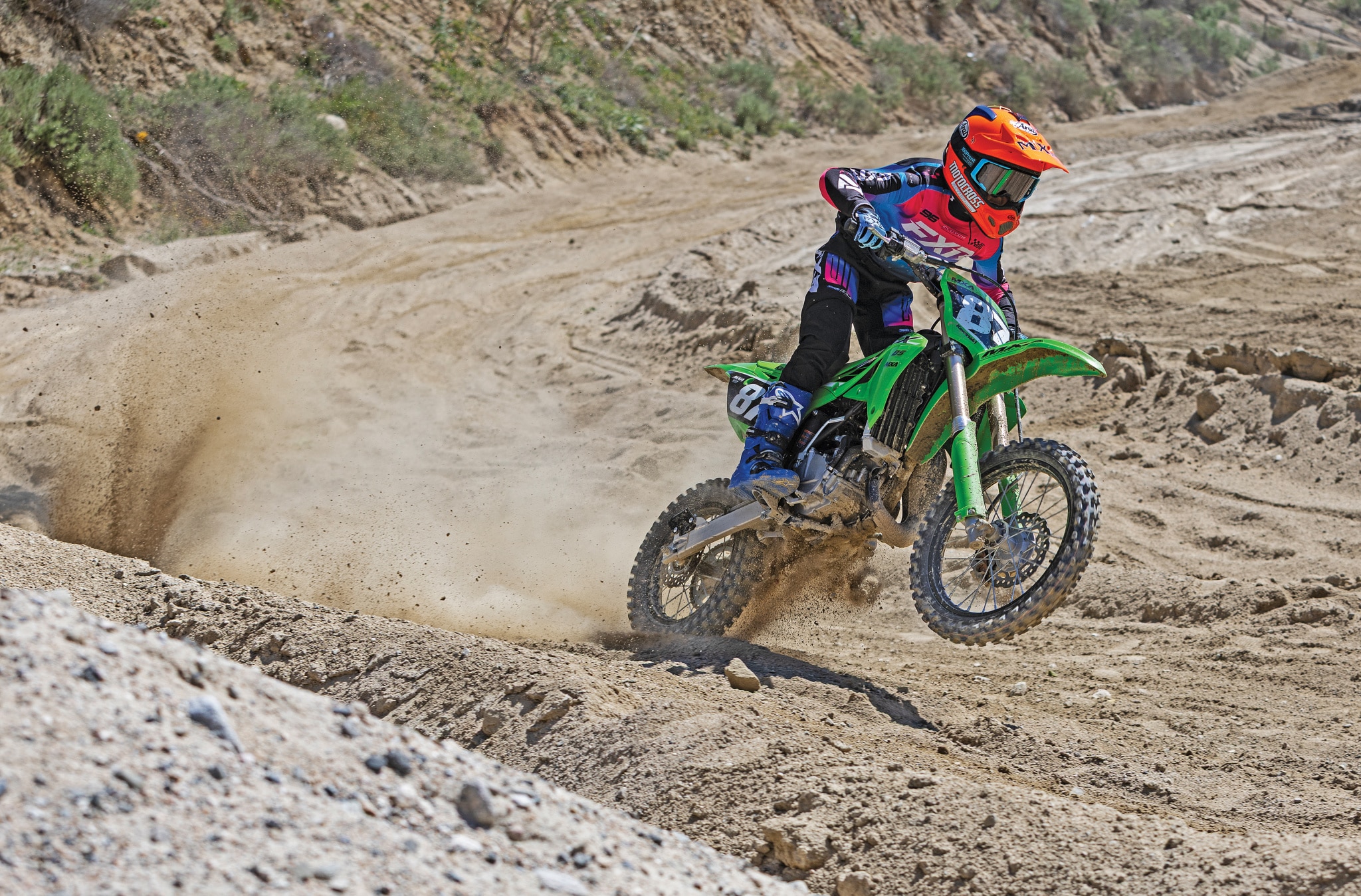 The KX85 is down on power, but it has potential. It’s a great bike to start on and has room to grow with aftermarket mods.
The KX85 is down on power, but it has potential. It’s a great bike to start on and has room to grow with aftermarket mods.
We also love how easy it is to change air filters on the Austrian bikes, while the Yamaha and Kawasaki still require you to stick your hand down under the seat to access the filters. Another plus: the Austrian bikes come with durable hydraulic clutches, while the Japanese brands still use cable clutches. Our 75-pound Novice test rider put 20 hours on our 2025 GasGas MC85 before this shootout, and the stock clutch is still going strong.
If you want the fastest, best-handling and most race-ready 85cc, look into a KTM, Husqvarna or GasGas. If you want to go the more affordable route and still have a competitive steed with spring forks (that don’t require the extra work of air forks), go with a Yamaha YZ85. If you want an 85cc that will teach little Johnny how to carry momentum to keep up with the competition, or if you don’t mind spending money on engine and suspension upgrades because you plan to cash in on Kawasaki’s impressive Team Green contingency program, then the KX85 is the bike for you.

We didn’t get the “wrecking crew” name for no reason. Our test riders are hard on bikes, parts and gear, so we’re always looking for new products. Thanks to our new partnership with MotoSport.com, our readers can benefit by using this QR code to purchase parts, gear and accessories. Use it to save $20 on your next online order of $100 or more.


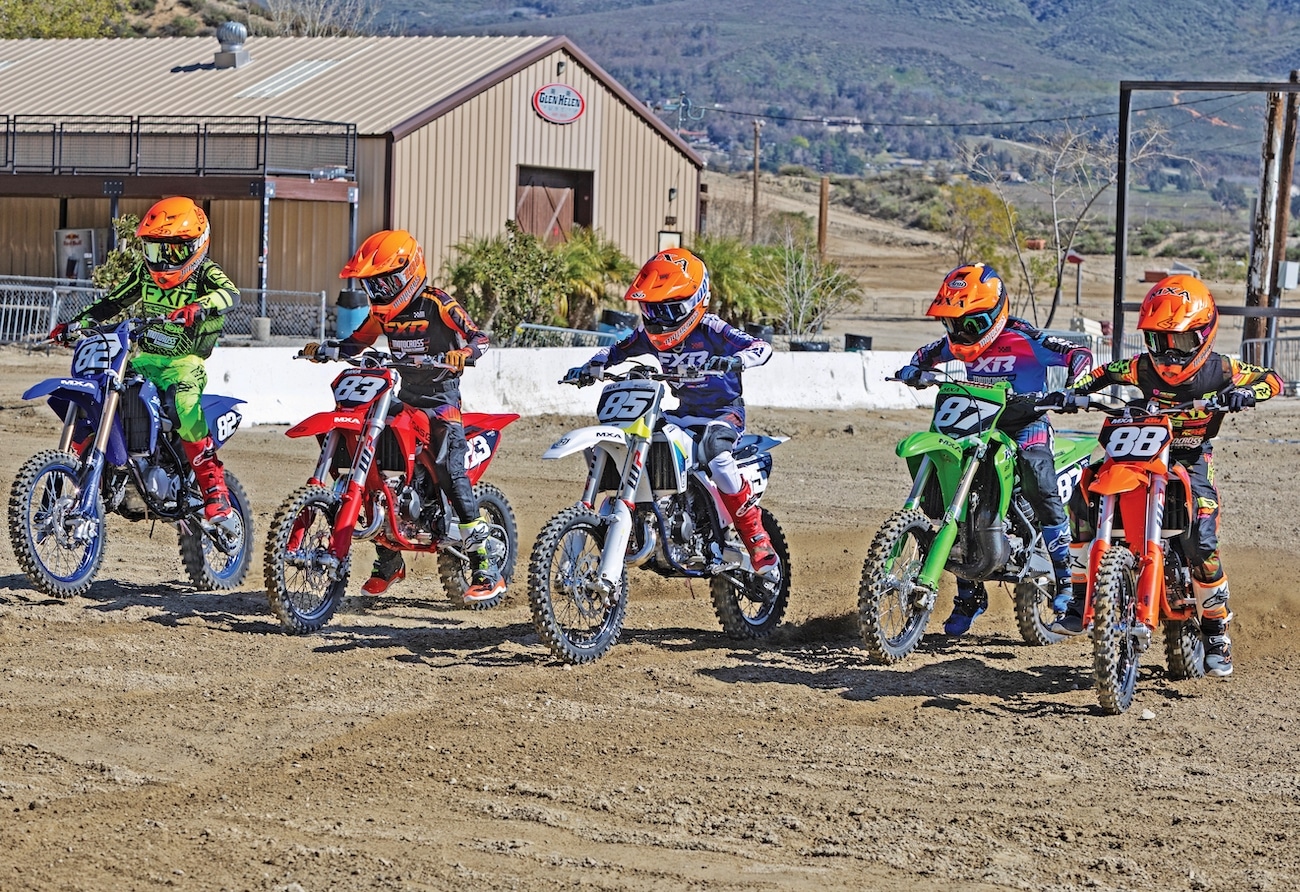



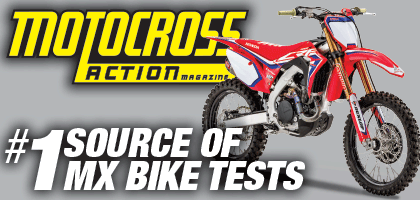

Comments are closed.